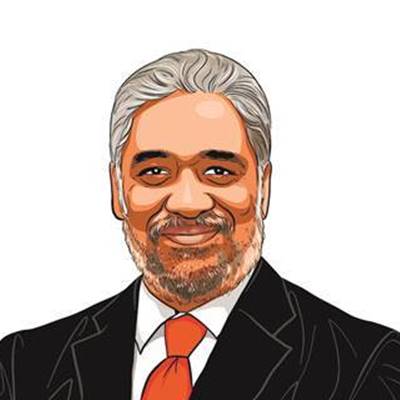Opinion Eastern exposure
The Thai prime minister is the third successive visitor from the East to grace Indias annual Republic Day celebrations.
Eastern exposure
Two important visitors to Delhi this week the foreign minister of Myanmar,Wunna Maung Lwin,and the prime minister of Thailand,Yingluck Shinawatra bring Indias eastern flank into strategic perspective.
The Thai prime minister is the third successive visitor from the East to grace Indias annual Republic Day celebrations. Last year,the president of Indonesia,Susilo Bambang Yodhoyono was the chief guest. The year before,it was South Korean President Lee Myung-bak.
Indias deepening interest in East Asia comes at a time when the region has become the principal strategic theatre in the world. As Chinas power and influence in the region has grown over the last two decades,the Obama administration announced a pivot to the East last year.
In proclaiming its return to Asia,Washington has been egging India on for a larger role in East and Southeast Asia. The leaders from the region too,want Delhi to be a lot more active and effective. As Myanmar comes out of its prolonged international isolation and Thailand overcomes its political instability,India has a big opportunity to put the relations with the two countries on a stronger footing.
One way of doing it is for India to join the massive project for the development of a deep sea port and special economic zone in Dawei,Myanmar,being sponsored by Thailand. When developed,the $50 billion Dawei project will tower over the recent China-built port complexes in Gwadar (Pakistan) and Hambantota (Sri Lanka).
Dawei project
To be located at Dawei,on the shores of the Andaman Sea in southern Myanmar and close to Thailand,the project is expected to reshape not only Myanmars economy but also the geopolitics of the region. The project,spread over nearly 250 sq km,will include the construction of a deep seaport, superhighways,steel mills,power plants,shipyards,oil refineries,pulp and paper mills and a petrochemical complex. A few golf courses and resorts are also in the works.
The port and the associated transport corridor running across Myanmar and Thailand could emerge as an important alternative to the Malacca Straits,through which much of the trade between China and East Asia on the one hand,and the Indian Ocean and Europe on the other,traverses today.
The Dawei project is similar to a century-old plan,never implemented,to build the Kra Canal across the long and narrow peninsula where the territories of Myanmar,Thailand and Malaysia converge.
Like the Panama Canal linking the Atlantic and Pacific Oceans,the Kra Canal would have cut through the peninsula that separates the Indian and
Pacific Oceans. The Dawei project instead aims to create an overland system of logistical flow coupled with a massive industrial complex.
An Italian-Thai company called Ital-Thai signed a contract with the military government in Myanmar for the development of Dawei complex at the end of 2010. The elected government recently overruled the Ital-Thai plans to build coal-fired plants,citing environmental concerns. Many other issues on the Myanmar side relating to visas,customs facilitation and the development of associated road networks remain to be sorted out before the first phase of the project can take off.
Indias share
On the eve of the Thai prime ministers visit,India has signalled its interest in joining the Dawei project in collaboration with the Thai companies.
Earlier this week,Somchet Thinaphong,the managing director of the Dawei Development Corporation (DDC),in which Ital-Thai has a controlling stake,told the press in Bangkok that he has full confidence in the new political leadership of Myanmar to back the largest ever project in Southeast Asia. The DDC,he added,hopes to secure $8.5 billion by the end of 2012 to finance infrastructure and
utilities under the first phase of the project,and is confident it will find partners. China,Japan and South Korea are the key strategic partners of our projects, Somchet said. Finding a balance for each of these groups is important. For example,if we have a lot of Chinese partners,the US might not be happy
with that.
Until now,India has tended to complain about Chinas mega infrastructural projects in the Indian Ocean,but has shown little strategic imagination or organisational competence in initiating its own. The Dawei project might offer India an opportunity to redeem itself.
The writer is a senior fellow at the Centre for Policy Research,Delhi


